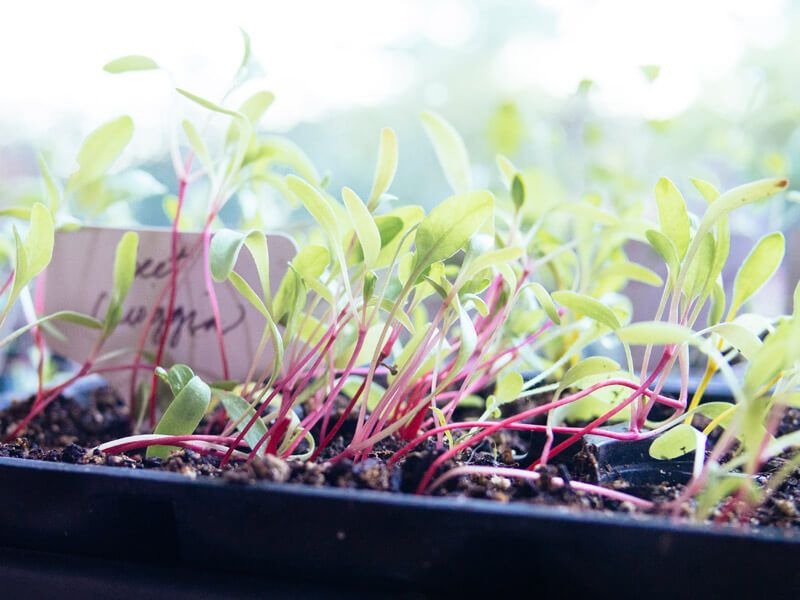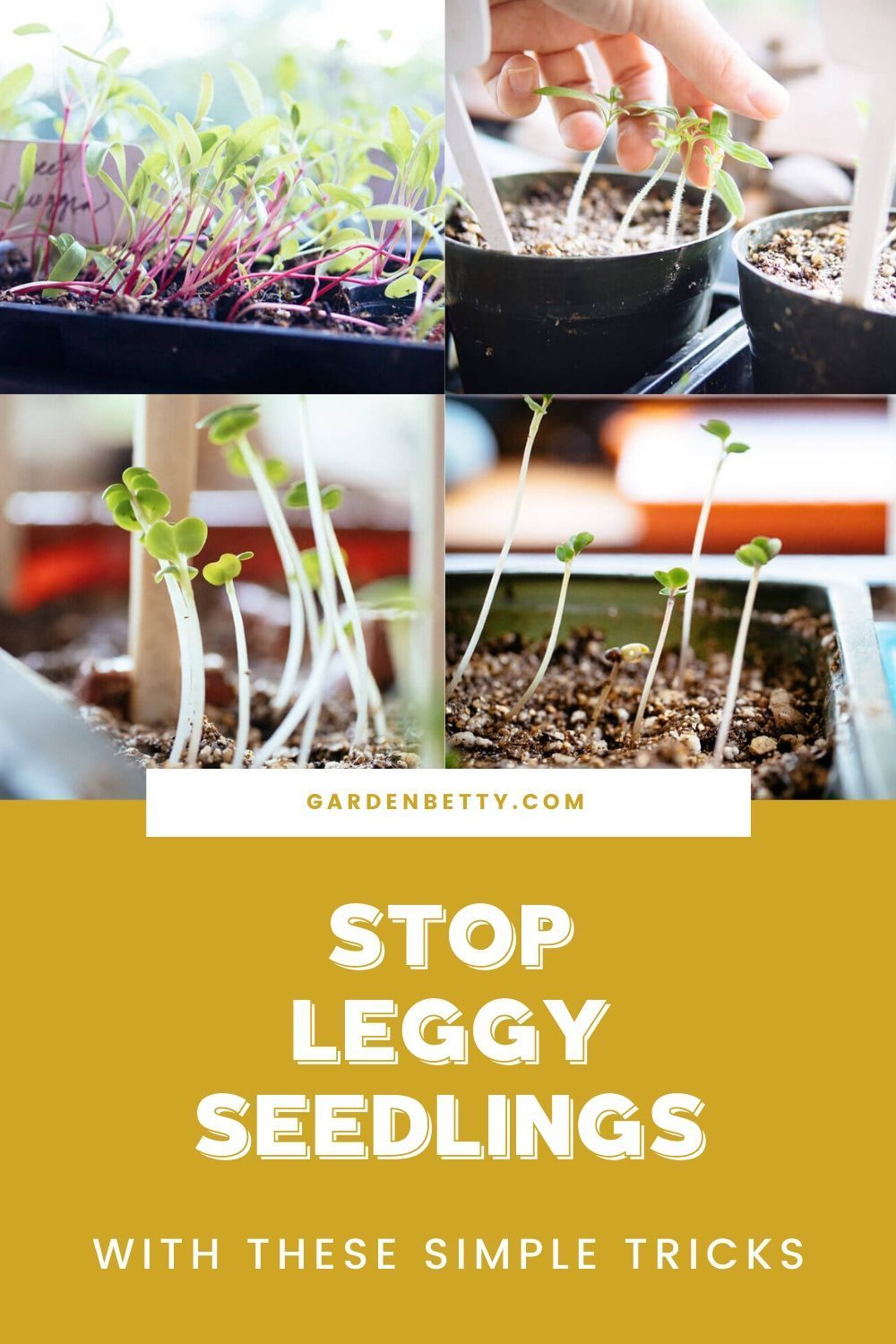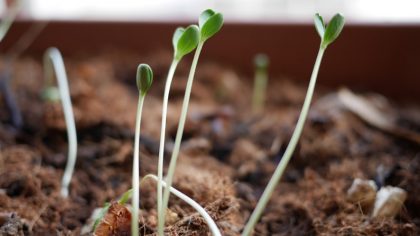Leggy Seedlings: What Causes Them and How to Fix Them
In the world of gardening and horticulture, the quest for lush, healthy seedlings is a journey that many green thumbs embark upon. There’s nothing quite as satisfying as seeing your little sprouts flourish into robust plants. However, the journey can sometimes take an unexpected turn, resulting in leggy seedlings. But fear not, for in this comprehensive guide, we will delve into the reasons behind this phenomenon and provide you with effective solutions to remedy it. Let’s get started on the path to robust seedlings.
What are Leggy Seedlings?

Before we dive into the causes and solutions, let’s establish a clear understanding of what leggy seedlings are. Leggy seedlings are those delicate, slender sprouts that appear to be reaching for the sky, often with elongated stems and sparse leaves. This phenomenon is not what any gardener hopes for, as it can lead to weak, fragile plants that struggle to thrive.
The Causes of Leggy Seedlings

Understanding the root causes of leggy seedlings is crucial to prevent and address this issue. Several factors can contribute to the development of leggy seedlings:
Insufficient Light
One of the primary culprits behind leggy seedlings is insufficient light. When seedlings do not receive adequate light, they stretch in an attempt to reach the available light source. This results in elongated stems and weak, spindly growth.
Improper Temperature
Temperature plays a vital role in the growth of seedlings. If the environment is too warm, it can encourage rapid growth, leading to legginess. On the other hand, cold temperatures can hinder proper growth, causing elongated stems as well.
Overcrowding
Planting too many seedlings in a confined space can lead to overcrowding. When seedlings compete for space, they stretch out to access more light and resources, resulting in leggy growth.
Poor Soil Quality
Inadequate soil quality can also contribute to leggy seedlings. If the soil lacks essential nutrients or proper aeration, the seedlings may struggle to develop strong root systems, leading to legginess.
Overfertilization
Believe it or not, too much of a good thing can be detrimental. Overfertilization can cause rapid growth that results in leggy seedlings. It’s essential to follow recommended fertilization guidelines for the specific plants you’re growing.
How to Fix Leggy Seedlings

Now that we’ve identified the causes, let’s explore effective solutions to fix leggy seedlings and promote healthy growth:
Increase Light Exposure
To combat leggy seedlings caused by insufficient light, consider the following:
- Natural Light: Place your seedlings in a location where they can receive adequate natural light, such as near a south-facing window.
- Artificial Light: Use grow lights to supplement natural light. Position the lights close to the seedlings to ensure they receive the required intensity.
Adjust Temperature
Maintaining the right temperature is crucial. Here’s what you can do:
- Optimal Temperature: Ensure the environment remains at the recommended temperature for your specific plant species. Use a thermometer to monitor and adjust as needed.
- Hardening Off: Gradually acclimate your seedlings to outdoor conditions by transitioning them from the indoor environment to the outside over several days.
Thin Out Overcrowded Seedlings
To address overcrowding, follow these steps:
- Thinning: Gently remove excess seedlings to provide ample space for the remaining ones. This will reduce competition for light and resources.
Improve Soil Quality
Enhance your soil for healthier seedlings:
- Quality Soil Mix: Use a well-balanced, nutrient-rich soil mix that provides essential minerals and promotes good drainage.
- Adequate Aeration: Ensure the soil is well-aerated to facilitate root growth. Consider adding perlite or vermiculite to the mix.
Adjust Fertilization
For seedlings suffering from overfertilization, here’s what you can do:
- Flush the Soil: Water the seedlings thoroughly to flush excess fertilizer from the soil. Be cautious not to overwater, as this can lead to other issues.
- Reduce Future Fertilization: Follow the recommended fertilization schedule for your specific plant species. Less is often more when it comes to fertilizing seedlings.
FAQ

Q1: Can leggy seedlings be saved?
Yes, leggy seedlings can be saved if addressed promptly. By providing them with proper light, temperature, and space, you can encourage healthier growth.
Q2: How can I prevent leggy seedlings in the first place?
To prevent leggy seedlings, ensure they receive adequate light, maintain the correct temperature, avoid overcrowding, use high-quality soil, and follow appropriate fertilization guidelines.
Q3: Are all plant species prone to legginess?
While legginess can affect a wide range of plant species, some are more prone to it than others. It’s essential to research the specific needs of the plants you are growing to prevent leggy seedlings.
Conclusion

In the world of gardening, nurturing strong and healthy seedlings is the first step towards a bountiful harvest. Leggy seedlings can be a setback, but armed with the knowledge of their causes and effective solutions, you can ensure your seedlings grow into robust, flourishing plants. Remember the importance of light, temperature, spacing, soil quality, and proper fertilization in the quest for perfect seedlings. By implementing these strategies, you can bid farewell to leggy seedlings and welcome a thriving garden.
tag
- chicken feed
- how to Keep Chickens Off Your Porch
- How to grow oyster mushrooms at home
- Growing Kale in Pots

No Responses